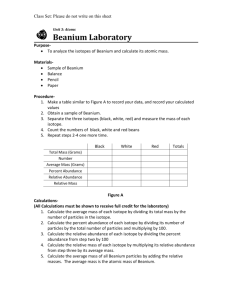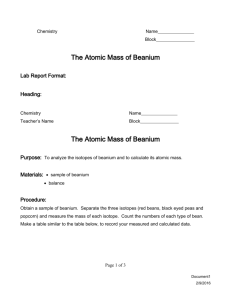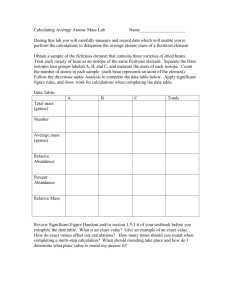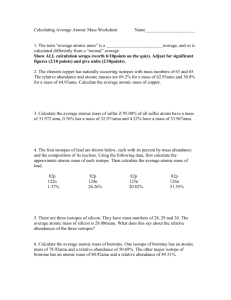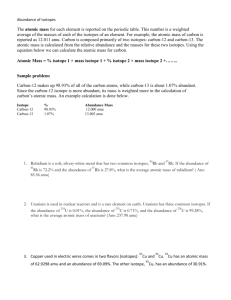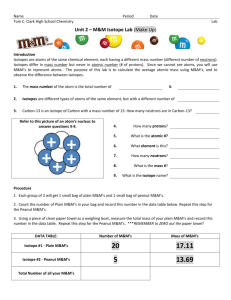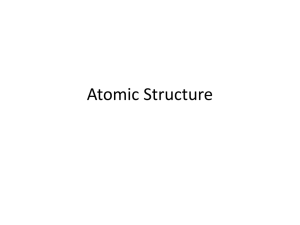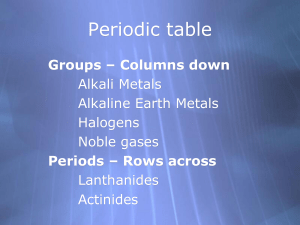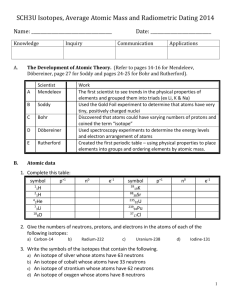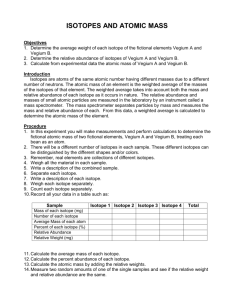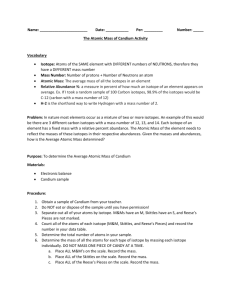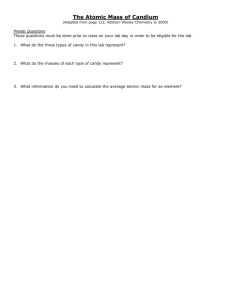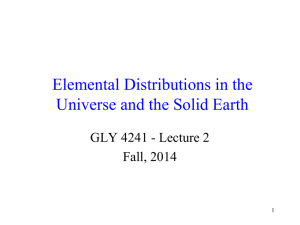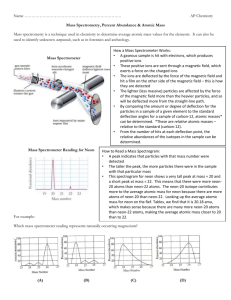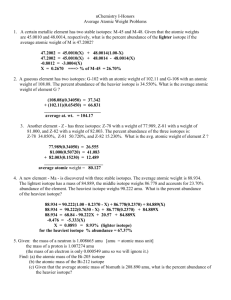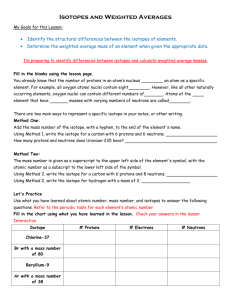Isotope/Average Atomic Mass Reading assignment
advertisement
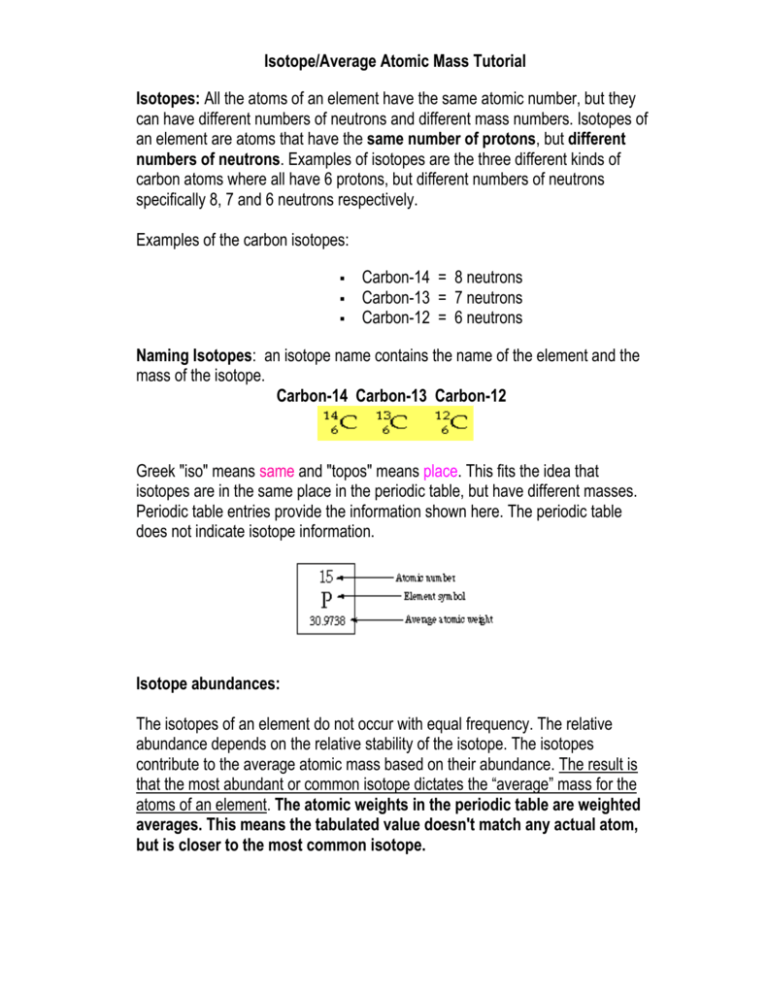
Isotope/Average Atomic Mass Tutorial Isotopes: All the atoms of an element have the same atomic number, but they can have different numbers of neutrons and different mass numbers. Isotopes of an element are atoms that have the same number of protons, but different numbers of neutrons. Examples of isotopes are the three different kinds of carbon atoms where all have 6 protons, but different numbers of neutrons specifically 8, 7 and 6 neutrons respectively. Examples of the carbon isotopes: Carbon-14 = 8 neutrons Carbon-13 = 7 neutrons Carbon-12 = 6 neutrons Naming Isotopes: an isotope name contains the name of the element and the mass of the isotope. Carbon-14 Carbon-13 Carbon-12 Greek "iso" means same and "topos" means place. This fits the idea that isotopes are in the same place in the periodic table, but have different masses. Periodic table entries provide the information shown here. The periodic table does not indicate isotope information. Isotope abundances: The isotopes of an element do not occur with equal frequency. The relative abundance depends on the relative stability of the isotope. The isotopes contribute to the average atomic mass based on their abundance. The result is that the most abundant or common isotope dictates the “average” mass for the atoms of an element. The atomic weights in the periodic table are weighted averages. This means the tabulated value doesn't match any actual atom, but is closer to the most common isotope. How to Calculate an Average Atomic Weight To do these problems you need some information: the exact atomic weight for each naturally-occurring stable isotope and its percent abundance. Example #1: Carbon Mass number Exact weight Percent abundance 12 12.000000 98.90% 13 13.003355 1.10% To calculate the average atomic weight, each exact atomic weight is multiplied by its percent abundance (expressed as a decimal). Then, add the results together and round off to an appropriate number of significant figures (hundredths place will be fine for now). This is the solution for carbon: Work (12.000000) (0.9890) + (13.003355) (0.0110) = 12.01amu Example #2: Nitrogen Mass number Exact weight Percent abundance 14 14.003074 99.63% 15 15.000108 0.37% This is the solution for nitrogen: Work (14.003074) (0.9963) + (15.000108) (0.0037) = 14.01amu Try These On Your Own: (show your work) Example #3: Chlorine Mass number Exact weight Percent abundance Example #4: Silicon Mass number Exact weight Percent abundance 35 34.968852 75.77 28 27.976927 92.23 37 36.965903 24.23 29 28.976495 4.67 30 29.973770 3.10 The answer for chlorine: The answer for silicon: (show your work here) Example 3: 35.45 amu Example 4: 28.09 amu Homework Problems Calculate the average atomic weight; show your work to the right of each problem, and round your answers to the hundredths place. 1) Magnesium (show your work here) mass number exact weight Percent abundance 24 23.985042 78.99% 25 24.985837 10.00% 26 25.982593 11.01% 2) Molybdenum Mass number Exact weight Percent abundance 92 91.906808 14.84% 94 93.905085 9.25% 95 94.905840 15.92% 96 95.904678 16.68% 97 96.906020 9.55% 98 97.905406 24.13% 100 99.907477 9.63% 3) Tin Mass number Exact weight Percent abundance 112 111.904826 0.97% 114 113.902784 0.65% 115 114.903348 0.36% 116 115.901747 14.53% 117 116.902956 7.68% 118 117.901609 24.22% 119 118.903310 8.58% 120 119.902200 32.59% 122 121.903440 4.63% 124 123.905274 5.79%




